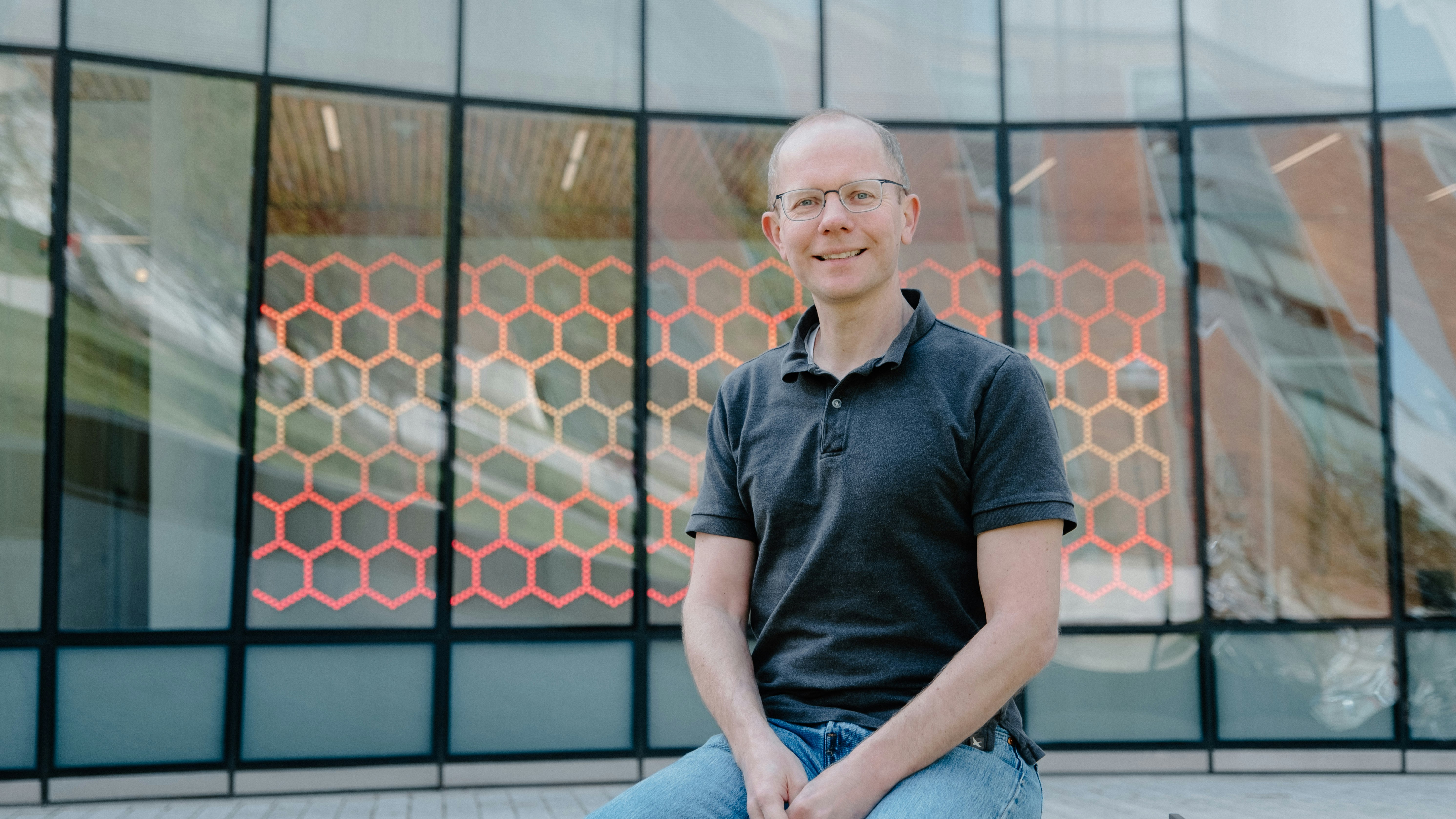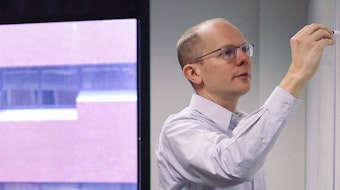Wonders Never Cease

Big Questions Led Paul Martini to a Life Among the Stars
“Why can I see the moon during the day?”
Paul Martini remembers pondering that question, and many others, as a boy. He would crane his neck to look up at the sky, which teemed with as many secrets as stars. “What is the universe,” he wondered, “and where did it come from?”
The mysteries of the cosmos, the future astronomer discovered, are a fitting backdrop for the black holes he studies today: massive and complex; far, far beyond the reach of current knowledge; and, at least for Martini, as captivating as their gravitational pull. “There’s so much that we don’t know,” he says. “Not just laypersons, but the scientists who are at the forefront of the field. There are so many unanswered questions.”
Ever since his original moon musings, Martini, Radcliffe’s 2020–2021 William Bentinck-Smith Fellow and a professor at the Ohio State University, has chased answers to increasingly complex problems, including insights that could someday upend Einstein’s prized theory of relativity.
With experience in both astrophysics and instrumentation, he’s the rare scientist who not only analyzes data but helps to build the equipment through which it’s collected, including one of the most powerful telescopes in the world. The force of his curiosity is no less powerful: Why is the universe expanding? What is dark energy? And is there a fifth force of nature we have yet to discover? Now, Martini is exploring cosmic acceleration—the idea that the universe is not only expanding but doing so at a rate that exceeds previous estimates.
Growing up in Philadelphia, Martini sated his scientific curiosity with visits to the Franklin Institute. The giant model of the human heart and the math puzzles caught his attention, but it was the mirrored parabola on the roof that captured his imagination. When a guide held a hunk of wood above those mirrors, it caught fire, demonstrating the sun’s energy.
At home, Martini watched and learned from his father, a carpenter and contractor. So although he read Stephen Hawking’s A Brief History of Time as a teenager, he also painted houses, worked in hardware stores, and endlessly tinkered, repairing everything from electronics to chairs. “I was always very much hands-on,” he says.
Later, as a graduate student at Ohio State, Martini marveled at the sight of engineers constructing a telescope with instruments he had helped build. As part of his studies, he spent several weeks at the MDM Observatory, on a mountain outside Tucson, Arizona. Often the sole observer at the station, Martini slept during the day and stayed awake all night, taking breaks to walk outside and stare up at the stars. “Just beautiful,” he recalls. More beauty awaited in the even darker night skies of the Chilean Andes, where Martini became one of the first operators of the Magellan telescope during successive postdoctoral fellowships with the Carnegie Observatories and the Harvard-Smithsonian Center for Astrophysics in the late 1990s.
Martini’s latest project, the Dark Energy Spectroscopic Instrument (DESI), is a perfect culmination of his two interests. “It combines an instrumentation side—practical, hands-on building—with these really big-picture questions about the universe,” he says.
A decade in the making, DESI sits on the same mountaintop as the MDM Observatory. Working with a team of nearly 500 researchers from 75 institutions in 13 countries, Martini helped build the telescope, forging the spectrographs that collect light from galaxies and supermassive black holes called quasars, 10 or 11 billion light-years away. After those precious photons of light have made the trek all the way to Earth’s atmosphere, Martini doesn’t want to lose even one. “We want to try to be close to 100 percent efficiency,” he says. The effort shows in the results: DESI can collect far more spectra per hour than any other instrument in the world, and with greater sensitivity.
“A survey like DESI is somewhat of a numbers game,” Martini says. “The more objects we are able to observe, the better the cosmological information that we’ll be able to extract.” For the next five years, the telescope will collect data from one target area for 20 minutes and then move to another for 20 minutes. By the project’s end, Martini estimates, he and his colleagues will have collected data on 35 million galaxies and quasars—a “phenomenal increase” over the limits of other spectroscopic surveys.
With that enormous data set in hand, scientists will have the ability to begin mapping out all matter in the universe and to more accurately measure the rate of cosmic acceleration. Better data will also provide clues to dark energy, that mysterious negative pressure that is causing the universe to expand at a faster and faster rate. One theory—that dark energy is a cosmological constant that grows as the universe grows—fits within Einstein’s theory of relativity. A second speculates that dark energy is an undiscovered fifth force of nature called “quintessence.” A third, which Martini says is the “most prevalent explanation,” would require a revision to Einstein’s theory: Rather than being the purely attractive force that he described, gravity may change to a repulsive force on very large scales. For now, it’s still a mystery.
“On any given day,” Martini says, “I could write down a list of questions I would like to answer that is five times as long as what I actually have time for.” And even the most comprehensive list couldn’t account for the questions scientists don’t yet know to ask—mysteries wrapped in mystery.
For the wide-eyed astronomer, these quests feel like setting sail toward an unknown horizon. Maybe there’s something there. Maybe not. But one thing’s certain: Martini will be on board, and he probably built the boat, too.
Caitlin McDermott-Murphy, formerly a writer for the Department of Chemistry and Chemical Biology at Harvard University, is a staff writer for the National Renewable Energy Laboratory.

The Mayall 4-Meter Telescope in Tucson, Arizona, will be home to the Dark Energy Spectroscopic Instrument (DESI), on which Martini is working. Photo by Marilyn Chung, ©2018 The Regents of the University of California, Lawrence Berkeley National Laboratory








